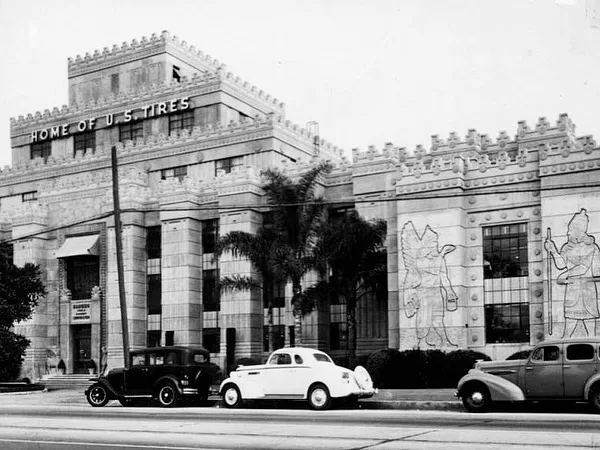The 1930s was a pivotal decade for Los Angeles as it transitioned from a small western town into a burgeoning metropolitan city.
The population boomed during this period, growing from around 1.2 million in 1930 to nearly 1.5 million by 1940 as people fled the Dust Bowl and sought opportunities in the movie industry.
Table of Contents
Speaking of movies, Hollywood became the epicenter of the Golden Age of cinema with the establishment of major studios like MGM, Paramount, RKO, and Warner Bros.
Legendary stars like Judy Garland, Shirley Temple, and Clarke Gable rose to fame, captivating audiences with their talent and glamour.
The decade also saw the inauguration of the famed Los Angeles Union Station in 1939 which served as the region’s transportation hub.
Life was not all glitz and glamour though. The Great Depression cast a long shadow over the city with high unemployment, housing shortages, and food insecurity plaguing many residents. Tent cities sprouted up housing thousands of impoverished families.
However, New Deal programs like the Works Progress Administration provided jobs building infrastructures like the Arroyo Seco Parkway, the first freeway in the Western US.
Despite economic hardships, Angelenos could escape to newly opened entertainment like the Los Angeles Memorial Coliseum, the Pantages Theatre, and the Santa Monica Pier.
The 1930s laid the foundation for LA’s explosive growth in the following decades as both an economic powerhouse and world-class city.
Did you know the Citadel outlets used to be a tire factory? (1930)




In 1929, the Samson Tire and Rubber Corporation, the nation’s second-largest tire supplier, embarked on an ambitious project to construct the largest tire manufacturing plant west of the Mississippi.
Commissioned by the architectural firm Morgan, Walls, & Clements, the plant was built on a 40-acre lot in the Union Pacific Industrial Tract at a staggering cost of $8,000,000 (approximately $130M today).
With a guaranteed minimum daily output of 4,500 tires and 8,000 tubes, the plant promised to cement Samson Tires’ dominance in the industry.
However, just weeks before its completion, the stock market crashed on October 29, 1929, forcing Samson to scrape together the remaining funds to finish the project.
Despite the economic turmoil, the plant finally opened in May 1930, but Samson was already negotiating its acquisition by the United States Rubber Company, which was finalized in January 1931.
Under the new ownership, renamed Uniroyal Inc. in 1962, the plant thrived, producing an estimated 10,000 tires daily.
However, in 1978, Uniroyal abandoned the facility, and it remained vacant until 1983 when the City of Commerce purchased it for $14M.
Years later, the Trammell Crow Co. from Dallas undertook a $118M project to convert the historic plant into the Citadel Outlets Mall and an adjacent Wyndham hotel.
Interestingly, the plant’s design was modeled after the Assyrian castle of King Sargon II, with depictions of Samson & Delilah as a reminder that “Samson Tires Are Strong Tires.”
Hollywood Hills 1932 vs 2024 (3358 Deronda Dr)

The Hollywood Hills have been a desirable residential area for the wealthy and famous since the early 20th century.
As the movie industry began to take off in Los Angeles in the 1910s and 1920s, many of the pioneering actors, directors, and producers chose to build lavish estates in the Hills, away from the hustle and bustle downtown.
The neighborhoods of Hollywoodland (now Hollywood Hills) and Beverly Hills became synonymous with over-the-top mansions owned by celebrities like Bert Lytell, Charlie Chaplin, and Harold Lloyd.
These early homes were often Spanish Colonial or Mediterranean Revival styles that evoked a sense of Old Hollywood glamor.
As the movie industry continued to grow in the following decades, new generations of stars built even larger and more opulent homes in the Hollywood Hills.
The 1950s and 1960s saw the rise of sleek, modern mansions made of steel, glass and concrete designed by architects like John Lautner and Richard Neutra.
No longer just for actors, the Hills became home to business moguls, musicians and other wealthy elites who wanted the prestigious address and panoramic views of Los Angeles.
Today, some of the most expensive and lavish private residences in the world can be found in the Hollywood Hills, continuing the decades-long tradition of luxury living among the canyons.